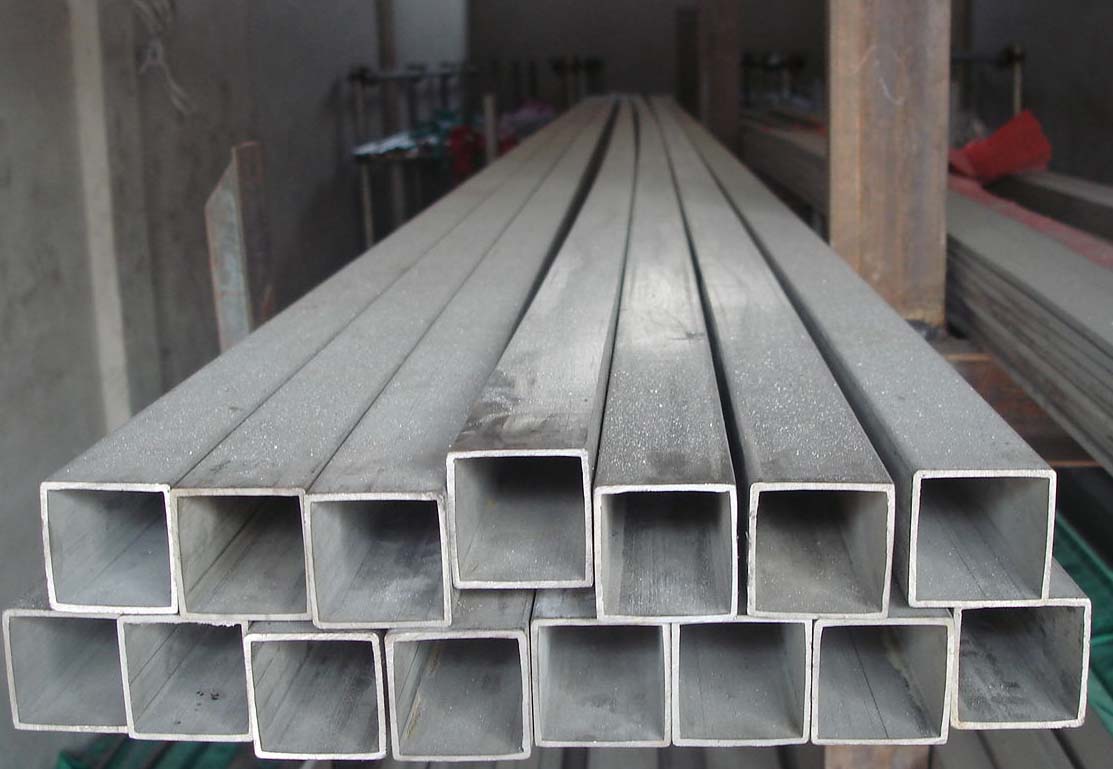Square tube (such as a500 square tube) is a hollow square cross-section light-weight thin-walled steel tube, also known as steel cold-formed profile. It is a section steel with a square cross-section shape and size made of hot-rolled or cold-rolled strip or coil as the base material, which is cold-bent and then high-frequency welded. Except for the thickened wall thickness of the hot-rolled extra-thick-walled square tube, the corner size and edge straightness reach or even exceed the level of the resistance-welded cold-formed square tube. Good comprehensive mechanical properties, good weldability, cold and hot workability and corrosion resistance, and good low temperature toughness.
Square tubes are used in construction, machinery manufacturing, steel construction and other projects, shipbuilding, solar power generation brackets, steel structure engineering, power engineering, power plants, agricultural and chemical machinery, glass curtain walls, automobile chassis, airports, boiler construction, highway railings, Housing construction, pressure vessels, oil storage tanks, bridges, power station equipment, lifting and transportation machinery and other high-load welded structural parts, etc.

Square tube forming method
1. Solid bend
Solid bending, as the name implies, is compacted bending. During solid bending, the inner and outer rollers and the inner and outer walls of the tube blank are compacted in two directions.
1) The advantages of solid bending are small rebound and accurate forming, and as long as the roll shape is accurate, the R of inner angle forming is more accurate.
2) The disadvantage of solid bending is the stretching/thinning effect. First, solid bending will cause stretching at the bend, and the stretching effect will shorten the longitudinal length of the bend line. Second, the metal at the bend will become thinner due to stretching.
2. Empty bend
Air bending is to bend the strip material through the one-way contact between the outer roller and the outer wall of the tube blank to form a bending moment. Empty bending will cause the bending line to be compressed, and the compression effect will make the bending line elongate longitudinally, and the metal will accumulate and thicken at the bending point. This is the compression/thickening effect of the empty bending.
1) The advantage of empty bending is that it can bend the side length when real bending cannot be performed, such as simultaneous bending and finishing of the upper side/side side of the square tube. The empty bend can also bend the inner angle of R<0.2t without breaking the pipe wall.
2) The disadvantage of empty bending is that when the upper side/side side is synchronously empty bending, the upper roller and the lower roller generate pressure at the same time. The forming force easily exceeds the critical point, causing the edge to be unstable and concave, and it will also affect the stable operation of the unit and the forming quality. This is also the difference between rectangular tubes and round tubes when they are air-bent.
The choice of forming method depends on the size of the square tube, wall thickness, material requirements, and the availability of production processes and equipment. According to specific production requirements, you can choose a suitable forming method for the production of square tubes.
Square tubes are used in construction, machinery manufacturing, steel construction and other projects, shipbuilding, solar power generation brackets, steel structure engineering, power engineering, power plants, agricultural and chemical machinery, glass curtain walls, automobile chassis, airports, boiler construction, highway railings, Housing construction, pressure vessels, oil storage tanks, bridges, power station equipment, lifting and transportation machinery and other high-load welded structural parts, etc.

Square tube forming method
1. Solid bend
Solid bending, as the name implies, is compacted bending. During solid bending, the inner and outer rollers and the inner and outer walls of the tube blank are compacted in two directions.
1) The advantages of solid bending are small rebound and accurate forming, and as long as the roll shape is accurate, the R of inner angle forming is more accurate.
2) The disadvantage of solid bending is the stretching/thinning effect. First, solid bending will cause stretching at the bend, and the stretching effect will shorten the longitudinal length of the bend line. Second, the metal at the bend will become thinner due to stretching.
2. Empty bend
Air bending is to bend the strip material through the one-way contact between the outer roller and the outer wall of the tube blank to form a bending moment. Empty bending will cause the bending line to be compressed, and the compression effect will make the bending line elongate longitudinally, and the metal will accumulate and thicken at the bending point. This is the compression/thickening effect of the empty bending.
1) The advantage of empty bending is that it can bend the side length when real bending cannot be performed, such as simultaneous bending and finishing of the upper side/side side of the square tube. The empty bend can also bend the inner angle of R<0.2t without breaking the pipe wall.
2) The disadvantage of empty bending is that when the upper side/side side is synchronously empty bending, the upper roller and the lower roller generate pressure at the same time. The forming force easily exceeds the critical point, causing the edge to be unstable and concave, and it will also affect the stable operation of the unit and the forming quality. This is also the difference between rectangular tubes and round tubes when they are air-bent.
The choice of forming method depends on the size of the square tube, wall thickness, material requirements, and the availability of production processes and equipment. According to specific production requirements, you can choose a suitable forming method for the production of square tubes.









